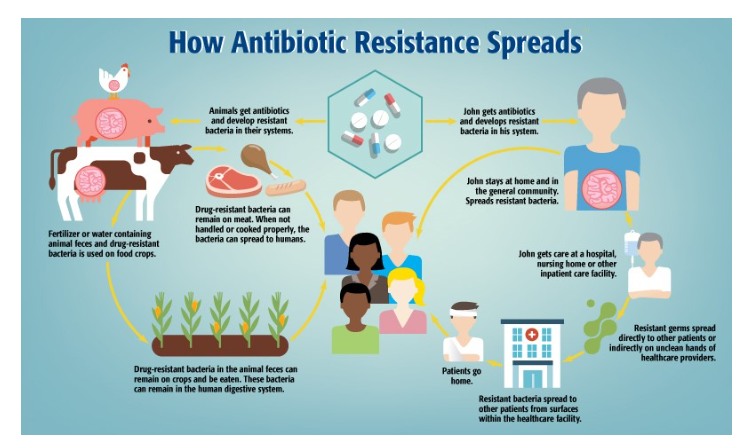Thursday, 23rd November 2023
Emissions Gap Report 2023: UNEP
In News: UNEP has issued the 2023 Emissions Gap Report, titled "Broken Record," emphasizing the world's failure to reduce emissions despite reaching new temperature highs.

Critical Assessment of Global Climate Efforts: Emissions, Pledges, and the Challenge of Limiting Warming
- Temperature Trajectory and Paris Agreement Pledges
- Current commitments under the Paris Agreement put the world on track for a 2.5-2.9°C temperature increase by the century's end.
- To achieve the 1.5-2°C goal, a substantial 28-42% emission reduction by 2030 is imperative.
- Global Emissions Trends
- Greenhouse gas emissions reached a record 57.4 GtCO2e in 2022, with a 1.2% increase.
- Fossil CO2 emissions, responsible for two-thirds of GHG, grew by 0.8–1.5%, driving the overall increase.
- Variability in G20 emissions, with increases in some nations and decreases in others, highlights the collective responsibility of major economies.
- Emissions from Major Economic Sectors
- Emissions are categorized into five major sectors: Energy supply, industry, agriculture and LULUCF, transport, and buildings.
- Energy supply (36%) and industry (25%) are the leading contributors, emphasizing the need for targeted sector-specific mitigation strategies.
- Mitigation Efforts and Projected Warming
- If current policies persist, global warming is anticipated to reach 3°C by the century's end.
- Unconditional Nationally Determined Contributions (NDCs) may limit the rise to 2.9°C, while conditional NDCs might cap it at 2.5°C.
- Net-Zero Pledges and Reality Check
- Despite Net-Zero Pledges, none of the G20 nations are aligning their emissions reductions with their targets.
- Even in an optimistic scenario, the likelihood of limiting warming to 1.5°C is only 14%, underscoring the urgency for more ambitious actions.
- Progress and Challenges Since Paris Agreement
- While policy progress has narrowed the implementation gap, it falls short of what is required.
- Nine countries updated their NDCs, potentially reducing emissions by about 9% annually by 2030, but further reductions are necessary for a cost-effective pathway to limit global warming to 1.5°C.
Bridging the Emissions Gap: Key Recommendations for Global Climate Action
- Advancing Low-Carbon Development
- Urgent global efforts are required to transition towards low-carbon development, with a primary focus on transforming the energy sector.
- The current trajectory of fossil fuel extraction and usage surpasses the carbon budget needed to achieve temperature goals.
- Support and Financing Responsibilities
- Nations with greater emission-generating capacity must take more ambitious actions and provide financial and technical support to developing countries.
- Low- and middle-income nations, responsible for over two-thirds of global emissions, should pursue development with low-emission growth trajectories.
- Carbon Dioxide Removal Considerations
- Future reliance on carbon dioxide removal is inevitable, but new methods carry risks, including the absence of fully developed technologies.
- The imperative to act is clear – delaying action will only intensify challenges, emphasizing the need to transition away from insufficient measures and set new benchmarks for emissions reduction, green transitions, and climate finance immediately.
|
UPSC Previous Year Questions Prelims (2016) Q. The ‘Common Carbon Metric’, supported by UNEP, has been developed for (a) assessing the carbon footprint of building operations around the world Ans: (a) Mains (2022) Q. Discuss global warming and mention its effects on the global climate. Explain the control measures to bring down the level of greenhouse gases which cause global warming, in the light of the Kyoto Protocol, 1997. |
Source: IE
Tantalum - Edukemy Current Affairs
In News: A team of researchers from IIT Ropar, has uncovered tantalum, a rare metal with exceptional properties, in the sands of the Sutlej River in Punjab.
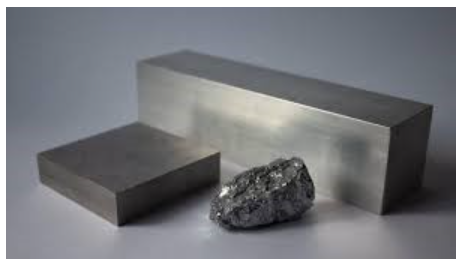
Key Insights into Tantalum: A Rare and Versatile Metal
Discovery
- Tantalum, an uncommon metal boasting an atomic number of 73, was initially identified in 1802 by Swedish chemist Anders Gustaf Ekenberg.
Distinctive Properties
- Exhibiting a grey hue, tantalum is both dense and remarkably resistant to corrosion, developing an oxide layer upon exposure to air.
- Pure tantalum is ductile, allowing it to be elongated into thin wires without fracturing.
- Highly resistant to chemical attacks below 150°C, it remains unaffected except by hydrofluoric acid, acidic solutions with fluoride ions, and free sulphur trioxide.
- Tantalum boasts an exceptionally high melting point.
Applications of Tantalum
- Electronic Sector
- Crucial for portable electronic devices, tantalum capacitors enable the efficient storage of more electricity in compact sizes.
- Recognized among 30 critical minerals for India, as identified by a committee of experts within the Ministry of Mines.
- Utilized in manufacturing components for chemical plants, nuclear power plants, aircraft, and missiles.
- Platinum Substitute
- Serving as a cost-effective alternative to platinum due to its high melting point.
- Medical Applications
- Inert to bodily fluids, tantalum is employed in crafting surgical equipment and implants, including artificial joints, according to the US Department of Energy.
- Cutting-Edge Material
- Tantalum carbide (TaC) composite with graphite stands as one of the toughest materials, applied in high-speed machine tool cutting edges.
Why discovery of tantalum in the Sutlej holds importance?
- The identification of tantalum in the sands of the Sutlej River suggests the existence of a possible tantalum source in India.
- This discovery has the potential to diminish reliance on imports and bolster domestic supply.
- Currently, India primarily imports Tantalum metal from the United States, United Kingdom, and Germany.
- The presence of tantalum offers significant prospects for advancing India's electronics and semiconductor industry.
Source: IE
e-Visa - Edukemy Current Affairs
In News: After a two-month suspension, India has reinstated e-visa services for Canadian citizens.
About e-Visa
- E-visas are offered in five categories, including tourist, business, conference, medical, and medical attendant.
- This online application system allows foreigners to apply four days before their intended travel date.
- Once the details are verified, an electronic travel authorization (ETA) is generated, which must be presented at the immigration checkpoint upon arrival.
- Entry using e-visas is restricted to 28 specified international airports and five major seaports in India.
- While this convenient facility was initially available to citizens of 171 countries before the 2020 restrictions, it has now been reinstated for 156 countries.
Significance of e-visa
- Convenience and Efficiency
- E-visas streamline the visa application process, allowing travellers to apply online, eliminating the need for physical paperwork and visits to consulates or embassies.
- Accessibility
- E-visas make the visa application process more accessible to a wider audience, including those residing in remote areas or regions without diplomatic missions.
- Enhanced Security
- The digital nature of e-visas incorporates advanced security features, reducing the risk of fraud and providing a more secure means of verifying travellers’ identities.
- Cost-Effective
- The digital processing of e-visas often reduces administrative costs for both governments and applicants, contributing to a more cost-effective and efficient visa system.
- Tourism Promotion
- E-visas can stimulate tourism by simplifying the entry process, attracting more visitors who may be deterred by complex and time-consuming visa procedures.
- Global Connectivity
- E-visas contribute to fostering global connectivity by encouraging international travel and exchanges, thereby promoting cultural understanding and economic ties between countries.
Challenges associated with their implementation
- Cybersecurity Risks
- E-visa systems are susceptible to cybersecurity threats, including hacking and identity theft. Protecting sensitive personal information is crucial to maintaining the security of the online application process.
- Digital Divide
- The digital nature of e-visas may exclude individuals who lack access to the internet or are not proficient in using online platforms, leading to a potential disparity in visa accessibility.
- Technical Glitches
- Technical issues, such as website crashes or glitches in the online application system, can hinder the application process and create frustration among applicants.
- Fraudulent Activities
- The online environment provides opportunities for fraudulent activities, including the submission of false documents or misrepresentation of information. Governments must implement robust verification mechanisms to counter such issues.
- Data Privacy Concerns
- E-visa systems involve the collection and storage of significant amounts of personal data. Ensuring compliance with data privacy regulations and safeguarding against data breaches is a critical challenge.
Way Forward
- Enhance Cybersecurity Measure
- Invest in robust cybersecurity infrastructure to protect against potential threats, ensuring the secure handling of sensitive personal information.
- Improve Accessibility and Digital Literacy
- Implement measures to bridge the digital divide by providing access to e-visa application facilities for individuals with limited internet access. Additionally, conduct awareness campaigns to enhance digital literacy.
- Regular System Audits and Updates
- Conduct regular audits of e-visa systems to identify vulnerabilities and implement timely updates to address technical glitches and potential security risks.
- Strengthen Fraud Detection Mechanisms
- Implement advanced fraud detection tools and procedures to identify and prevent fraudulent activities during the e-visa application process.
- Data Privacy Compliance
- Ensure strict compliance with data privacy regulations and establish transparent policies regarding the collection, storage, and sharing of personal information.
Source: TH
Sea Buckthorn - Edukemy Current Affairs
In News: Ladakh has obtained its fourth Geographical Indication (GI) tag, this time for the "Ladakh Sea Buckthorn."
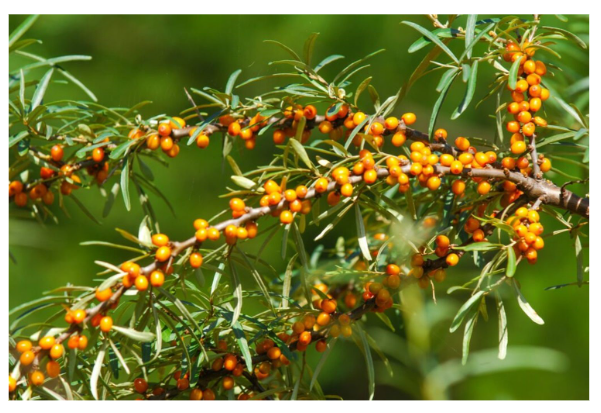
About Sea Buckthorn
- Sea buckthorn, a shrub known for yielding orange-yellow edible berries, is prevalent in India's Himalayan region, particularly in arid zones like the cold deserts of Ladakh and Spiti.
- The cultivation of Sea Buckthorn brings numerous ecological, medicinal, and economic advantages.
- Beyond its vibrant berries, the plant is recognized for its hardiness in challenging climates, contributing to soil conservation and biodiversity in regions where it thrives.
- Moreover, the berries are rich in nutrients, making them a valuable resource for medicinal applications and dietary supplements.
- Economically, the cultivation of Sea Buckthorn presents opportunities for income generation, promoting sustainable practices in these environmentally sensitive areas.
Source: AIR
Kadalundi mudflat - Edukemy Current Affairs
In News: The mudflat ecosystem in Kadalundi is diminishing swiftly, primarily attributed to both natural forces and human activities.
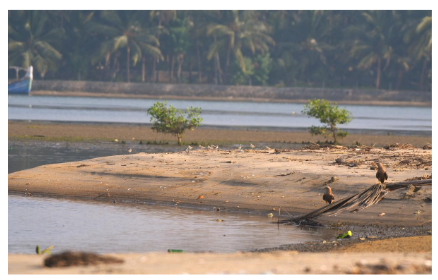
About Kadalundi mudflat
- In the early 2000s, Kadalundi boasted approximately 8 hectares of nutrient-rich mudflats, a size that has drastically contracted to just about 1 hectare in recent times.
- These mudflats play a crucial role in the ecosystem by offering essential prey, including polychaetes and crustaceans.
- Consequently, they serve as a magnet for a diverse array of migratory birds originating from distant places such as Siberia, Ladakh, Mongolia, and Scotland.
- Mudflats, also known as tidal flats, are coastal wetlands formed through the deposition of mud by tides or rivers.
- Typically found in sheltered areas like bays, bayous, lagoons, and estuaries, these mudflats provide vital habitats for various marine species and serve as critical feeding grounds for numerous migratory bird species during their journeys.
- The significant reduction in the expanse of mudflats in Kadalundi raises concerns about the potential impact on the biodiversity and ecological balance of the region.
Source: TH
Gambusia fish - Edukemy Current Affairs
In News: Recently, unforeseen outcomes associated with the introduction of mosquitofish, specifically Gambusia affinis and Gambusia holbrooki are studied by the experts.
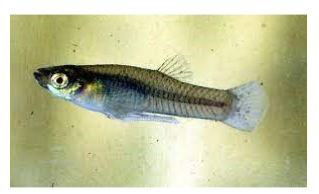
About Gambusia fish
- Introduced in the 1960s as a biological control measure to combat mosquito-borne diseases, these fish, namely Gambusia affinis and Gambusia holbrooki, have exceeded their intended habitats, resulting in significant ecological and environmental issues.
- Originating from the U.S., mosquitofish were initially introduced in India to control mosquito larvae.
- However, due to their adaptability and high tolerance for changing environmental conditions, they have proliferated extensively, leading to the displacement and predation of native fauna.
- Despite the withdrawal of the World Health Organization's recommendation for Gambusia as a mosquito control agent in 1982 and its classification as an invasive alien species by the National Biodiversity Authority of the Government of India in 2018, both governmental and non-governmental organizations persist in releasing these fish for mosquito control.
Source: TH
Directorate General of Civil Aviation (DGCA)
In News: Air India has been fined ₹10 lakh by the Directorate General of Civil Aviation (DGCA) for not providing hotel accommodations to passengers affected by flight delays.

About DGCA
- The Directorate General of Civil Aviation (DGCA) operates as an attached office under the Ministry of Civil Aviation, Government of India.
- As the primary regulatory body in the field of Civil Aviation, the DGCA focuses on safety-related issues.
- Its responsibilities encompass the regulation of air transport services to, from, and within India, along with the enforcement of civil air regulations, air safety standards, and airworthiness standards.
- Additionally, the DGCA plays a crucial role in coordinating its regulatory functions with the International Civil Aviation Organisation (ICAO), a specialized agency of the United Nations established in 1944.
- The ICAO has set the groundwork for global standards and procedures for peaceful air navigation.
- India, as one of its 193 member states, actively participates in these international aviation efforts.
- The ICAO's headquarters are situated in Montreal, Canada.
- The DGCA itself is headquartered in New Delhi, with regional offices strategically located across different parts of India.
- The Director General of Civil Aviation serves as the head of the DGCA, overseeing its operations and regulatory activities in the aviation sector.
Source: TH
International Labour Organisation (ILO)
In News: Central trade unions are urging an investigation into the tunnel collapse.

About ILO
- The International Labour Organization (ILO) stands as the sole tripartite agency within the United Nations, a unique position it has held since its establishment in 1919.
- Its distinctive structure brings together representatives from governments, employers, and workers across 187 member States, collectively working to establish labour standards, formulate policies, and create programs that advocate for decent work opportunities for all individuals, regardless of gender.
- Originally founded in 1919 by the Treaty of Versailles as an affiliated agency of the League of Nations, the ILO transitioned to become the first affiliated specialized agency of the United Nations in 1946.
- With its headquarters situated in Geneva, Switzerland, the organization was driven by a founding mission that emphasized the pivotal role of social justice in achieving universal and enduring peace.
- Central to its mission, the ILO actively promotes internationally recognized human and labour rights, garnering acclaim for its efforts with the receipt of the Nobel Peace Prize in 1969.
- The award was granted in recognition of its contributions to improving peace among classes, advocating for decent work and justice for workers, and offering technical assistance to developing nations.
Source: TH
Uruguay - Edukemy Current Affairs
In News: China and Uruguay have recently elevated their bilateral relations.

About Uruguay
- Uruguay, formally known as the Oriental Republic of Uruguay or the Republic East of the Uruguay, stands as a nation situated in South America.
- Bordered by Argentina to its west and southwest, Brazil to its north and northeast, the Río de la Plata to the south, and the Atlantic Ocean to the southeast, Uruguay occupies a strategic geographical position within the Southern Cone region of South America.
- Encompassing an approximate land area of 181,034 square kilometres, Uruguay is home to a population of around 3.5 million people.
- Notably, nearly 2 million inhabitants reside in the metropolitan area surrounding its capital and largest city, Montevideo.
- Beyond its geographical and demographic characteristics, Uruguay has a rich cultural heritage and a history shaped by its commitment to democracy and social progress.
- The country has been a pioneer in various aspects, including being the first in the world to provide every schoolchild with a free laptop and establishing a welfare state in the early 20th century.
Source: Reuters
Governor’s Role - Edukemy Current Affairs
In News: Concerns about the behaviour of Governors have been raised in the ongoing proceedings before the Supreme Court.
The governor's authority concerning the passage of bills
The powers of the governor regarding the passage of bills are outlined in Article 200 and Article 201 of the Constitution. These articles delineate the following options available to the governor when presented with a bill from the state legislature:
- Assent-The governor may approve the bill, leading it to become law.
- Withhold Assent-The governor has the authority to reject the bill by refusing to give assent.
- Return with Message-If the bill is not a money bill, the governor can send it back to the state legislature with a message, requesting a reconsideration of the entire bill or specific provisions.
- If the bill is passed again by the state legislature, with or without amendments, the governor is obligated to give assent.
- Reservation for President's Consideration-The governor can reserve the bill for the consideration of the president. The president may choose to give assent, withhold assent, or instruct the governor to return the bill to the state legislature for further deliberation.
- Mandatory reservation occurs if the bill jeopardizes the position of the state high court.
- Discretionary reservation is applicable if the bill contradicts the Constitution, the Directive Principles of State Policy, the broader national interest, or if it involves matters of significant national importance.
- This also includes bills related to the compulsory acquisition of property under Article 31A of the Constitution.
Challenges in the Governor's Office: Navigating Issues of Appointment, Role, and Accountability
- Appointment Dilemmas
- Original Text: The governor is appointed by the president on the advice of the central government, raising concerns about political neutrality.
- Rephrased: The appointment process of governors, carried out by the president on the central government's advice, gives rise to questions regarding the political impartiality of the governor.
- Role and Powers Struggles
- Original Text: The governor's constitutional roles and powers, such as giving assent to bills and appointing ministers, may lead to conflicts with elected state governments.
- Rephrased: The constitutional roles and powers of the governor, including approving bills and appointing ministers, often result in conflicts with elected state governments.
- Accountability and Immunity Challenges
- Original Text: Governors, acting as Union government agents, can be removed at the pleasure of the Union government, enjoying immunity from legal repercussions during their term.
- Rephrased: Despite being considered the President's counterparts in state governance, governors, acting as agents of the Union government, face removal at the Union government's discretion and enjoy immunity from legal consequences during their tenure.
- Political Dimensions in Appointments
- Original Text: Instances of governors being appointed from the ruling party or facing transfers for political reasons undermine the dignity and stability of the office.
- Rephrased: The appointment of governors from the ruling party or their transfers for political motives erodes the dignity and stability of the governor's office.
- Challenges in Exercising Discretion
- Original Text: Governors' discretionary powers, exemplified by actions like delaying assent to bills or interfering in state universities, face criticism for being arbitrary or unconstitutional.
- Rephrased: The exercise of discretionary powers by governors, seen in actions like delaying bill assent or intervening in state universities, is often censured for its perceived arbitrariness or unconstitutionality.
Reforming the Role and Appointment of Governors in India: Constitutional Recommendations
- Judicial Oversight
- The Supreme Court can monitor governors' conduct to ensure adherence to the Constitution and the law, preventing arbitrary or partisan actions.
- Revamp Appointment and Removal Process
- Amend the Constitution to introduce a more transparent and consultative mechanism for governor appointments, involving a collegium or parliamentary committee.
- Make removal more challenging, requiring a resolution of the state legislature or a judicial inquiry.
- Enhance Governor's Status
- Grant the governor a status akin to the President, ensuring accountability to the state legislature through elections and impeachment.
- Elected Representative Status
- Make the governor an elected representative of the state rather than a Union government nominee, increasing accountability and legitimacy.
- Impeachment Provision
- Enable impeachment of governors by the state legislature on grounds of constitutional violation or misconduct, introducing a check on power and deterring misuse.
- Constitutional Reforms Suggested by Committees and Supreme Court:
- Sarkaria Commission (1988)
- Advocate presidential appointment after consulting the Chief Minister.
- Emphasize the governor's role as a bridge between the centre and the state, discouraging interference in the democratic process.
- Venkatachaliah Commission (2002)
- Propose a committee comprising the prime minister, home minister, Lok Sabha speaker, and state chief minister for governor appointments.
- Stress the importance of governors completing their five-year terms unless removed for specific reasons, with consultation with the Chief Minister.
- Punchhi Commission (2010)
- Recommend removing the phrase "during the pleasure of the President" for governor removal.
- Suggest that removal should require a resolution from the state legislature, ensuring stability and autonomy for states.
- BP Singhal vs Union of India (2010)
- Affirm the President's authority to remove a governor without assigning reasons.
- Emphasize that removal should not be arbitrary, capricious, or based on unreasonable grounds.
- Sarkaria Commission (1988)
|
UPSC Previous Year Questions Prelims (2018) Q. Consider the following statements:
Which of the statements given above is/are correct? (a) 1 only Ans: (c) Prelims (2014) Q. Which of the following are the discretionary powers given to the Governor of a State?
Select the correct answer using the code given below: (a) 1 and 2 only Ans: (b) Prelims (2013) Q. Which one of the following statements is correct? (a) In India, the same person cannot be appointed as Governor for two or more States at the same time (b) The Judges of the High Court of the States in India are appointed by the Governor of the State just as the Judges of the Supreme Court are appointed by the President (c) No procedure has been laid down in the Constitution of India for the removal of a Governor from his/her post (d) In the case of a Union Territory having a legislative setup, the Chief Minister is appointed by the Lt. Governor on the basis of majority support Ans: (c) |
Source: TH
Share the article
Edukemy’s Current Affairs Quiz is published with multiple choice questions for UPSC exams
MCQ
Get Latest Updates on Offers, Event dates, and free Mentorship sessions.

Get in touch with our Expert Academic Counsellors 👋
FAQs
UPSC Daily Current Affairs focuses on learning current events on a daily basis. An aspirant needs to study regular and updated information about current events, news, and relevant topics that are important for UPSC aspirants. It covers national and international affairs, government policies, socio-economic issues, science and technology advancements, and more.
UPSC Daily Current Affairs provides aspirants with a concise and comprehensive overview of the latest happenings and developments across various fields. It helps aspirants stay updated with current affairs and provides them with valuable insights and analysis, which are essential for answering questions in the UPSC examinations. It enhances their knowledge, analytical skills, and ability to connect current affairs with the UPSC syllabus.
UPSC Daily Current Affairs covers a wide range of topics, including politics, economics, science and technology, environment, social issues, governance, international relations, and more. It offers news summaries, in-depth analyses, editorials, opinion pieces, and relevant study materials. It also provides practice questions and quizzes to help aspirants test their understanding of current affairs.
Edukemy's UPSC Daily Current Affairs can be accessed through:
- UPSC Daily Current Affairs can be accessed through Current Affairs tab at the top of the Main Page of Edukemy.
- Edukemy Mobile app: The Daily Current Affairs can also be access through Edukemy Mobile App.
- Social media: Follow Edukemy’s official social media accounts or pages that provide UPSC Daily Current Affairs updates, including Facebook, Twitter, or Telegram channels.



